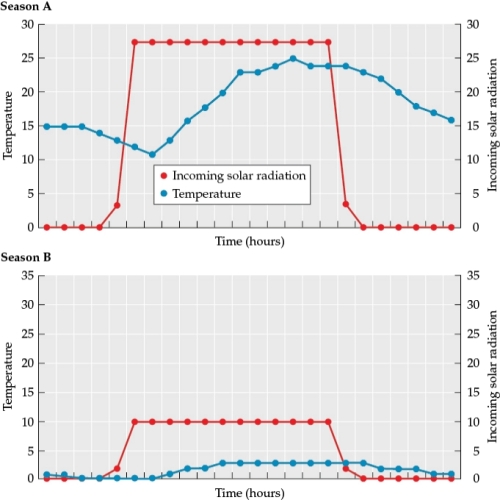Essay
Refer to the figure.

-You are one of a team of scientists studying a newly-discovered planet. You are receiving data from a probe that was landed on the planet by an unmanned mission. Your team is working with the little data you have from the probe to learn as much as you can about the planet's basic characteristics. The figure illustrates data collected by the probe at the same location on the planet during what you suspect are two different seasons (season A and season B). Based on what you have inferred from the data in the figure, sketch a new figure of the hypothetical orbit of this planet around its sun. Sketch the planet at four different positions during its orbit around its sun (at 12:00, 3:00, 6:00, and 9:00, relative to the sun). Label the seasons (A or B) at each of these four locations.
Correct Answer:

Verified
Correct Answer:
Verified
Q1: Refer to the figures.<br> <img src="https://d2lvgg3v3hfg70.cloudfront.net/TBO1115/.jpg" alt="Refer
Q2: Vegetation patterns affect the reflectance of solar
Q4: During _, Earth is closest to the
Q5: Refer to the figure.<br><img src="https://d2lvgg3v3hfg70.cloudfront.net/TBO1115/.jpg" alt="
Q6: Which statement about ice is true?<br>A) It
Q7: Refer to the map.<br><img src="https://d2lvgg3v3hfg70.cloudfront.net/TBO1115/.jpg" alt="Refer to
Q8: The Coriolis effect causes moving air at
Q9: High productivity in the open ocean would
Q10: In equatorial regions, the sun's rays
Q11: Refer to the figure.<br> <img src="https://d2lvgg3v3hfg70.cloudfront.net/TBO1115/.jpg" alt="Refer